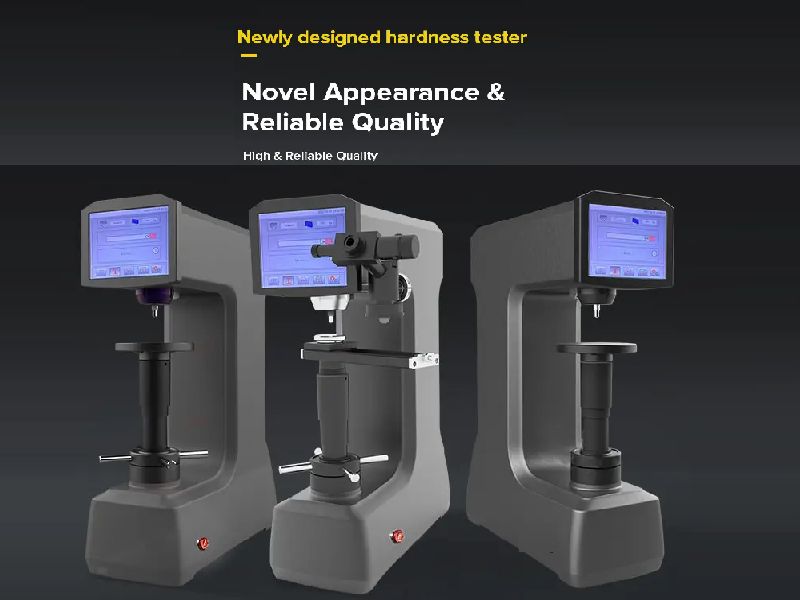Superficial Rockwell hardness tester is a type of Rockwell hardness tester. It uses smaller test force. When testing some small and thin workpieces, using Rockwell hardness tester will lead to inaccurate measurement values. We can use Superficial Rockwell hardness tester. Hardness tester can also be used to measure workpieces with Superficial hardened layers.
Its testing principle is exactly the same as that of Rockwell hardness tester. The difference is that the initial test force is 3KG, while the initial test force of ordinary Rockwell hardness tester is 10KG.
Superficial Rockwell hardness tester test force level: 15KG, 30KG, 45KG
The indenter used in the Superficial Rockwell hardness tester is consistent with the Rockwell hardness tester:
1. 120 degree diamond cone indenter
2. 1.5875 steel ball indenter
Superficial Rockwellhardness tester measuring scale:
HR15N, HR30N, HR45N, HR15T, HR30T, HR45T
(The N scale is measured by the diamond indenter, and the T scale is measured by the steel ball indenter)
The hardness is expressedas: hardness value plus Rockwell scale, for example: 70HR150T
15T means a steel ball indenter with a total test force of 147.1N (15 kgf) and an indenter of 1.5875
Based on the above characteristics, Superficial Rockwell has the following advantages:
1. Since it has twopressure heads, it is suitable for both soft and hard metal materials.
2. The test force is smaller than that of Rockwell hardness tester, and the Superficial damage of the workpiece is very small.
3. The smaller test force can partially replace the Vickers hardness tester, which is relatively economical and affordable.
4. The test process is fast and the finished workpiece can be detected efficiently.

Post time: Oct-10-2023


